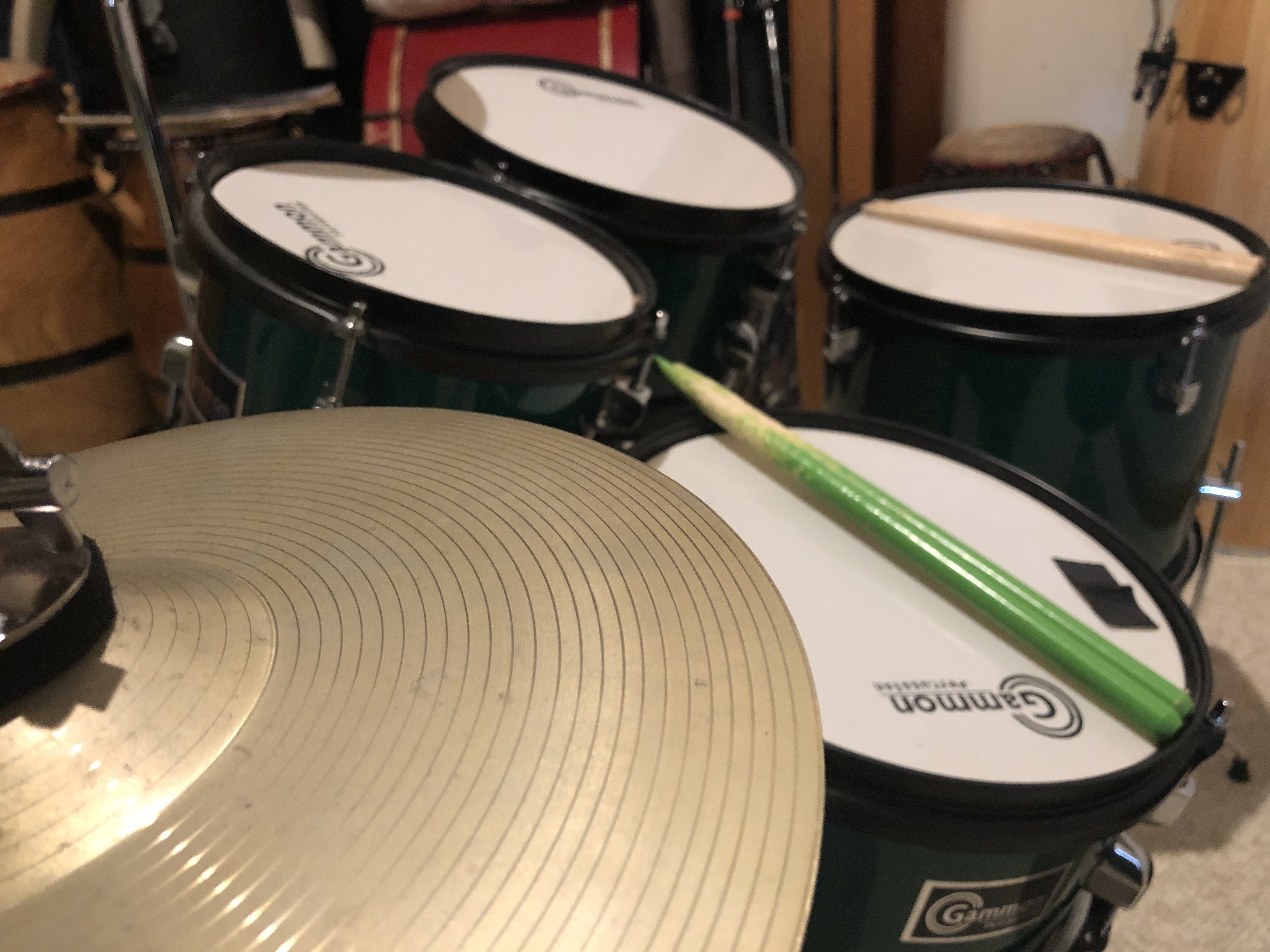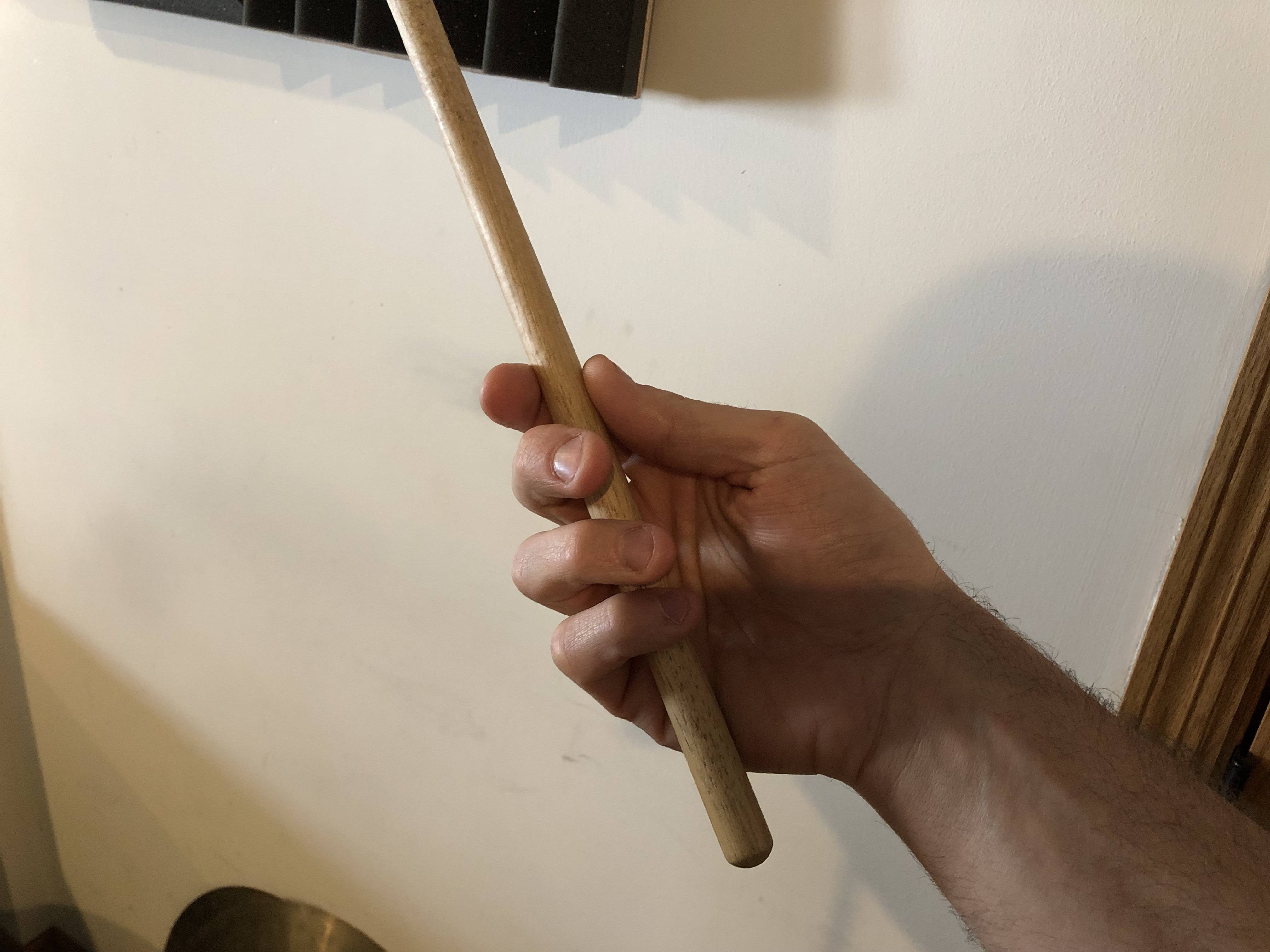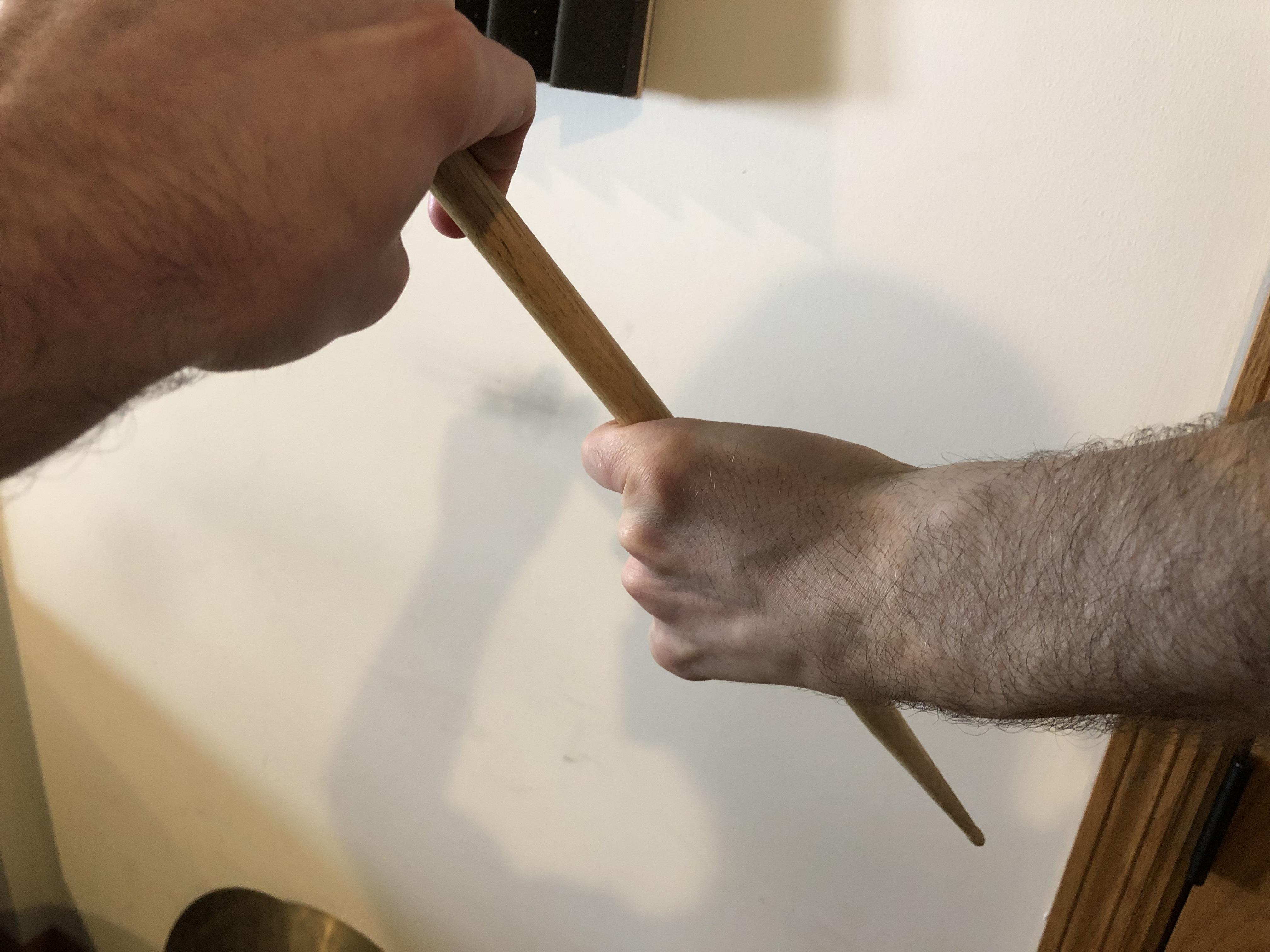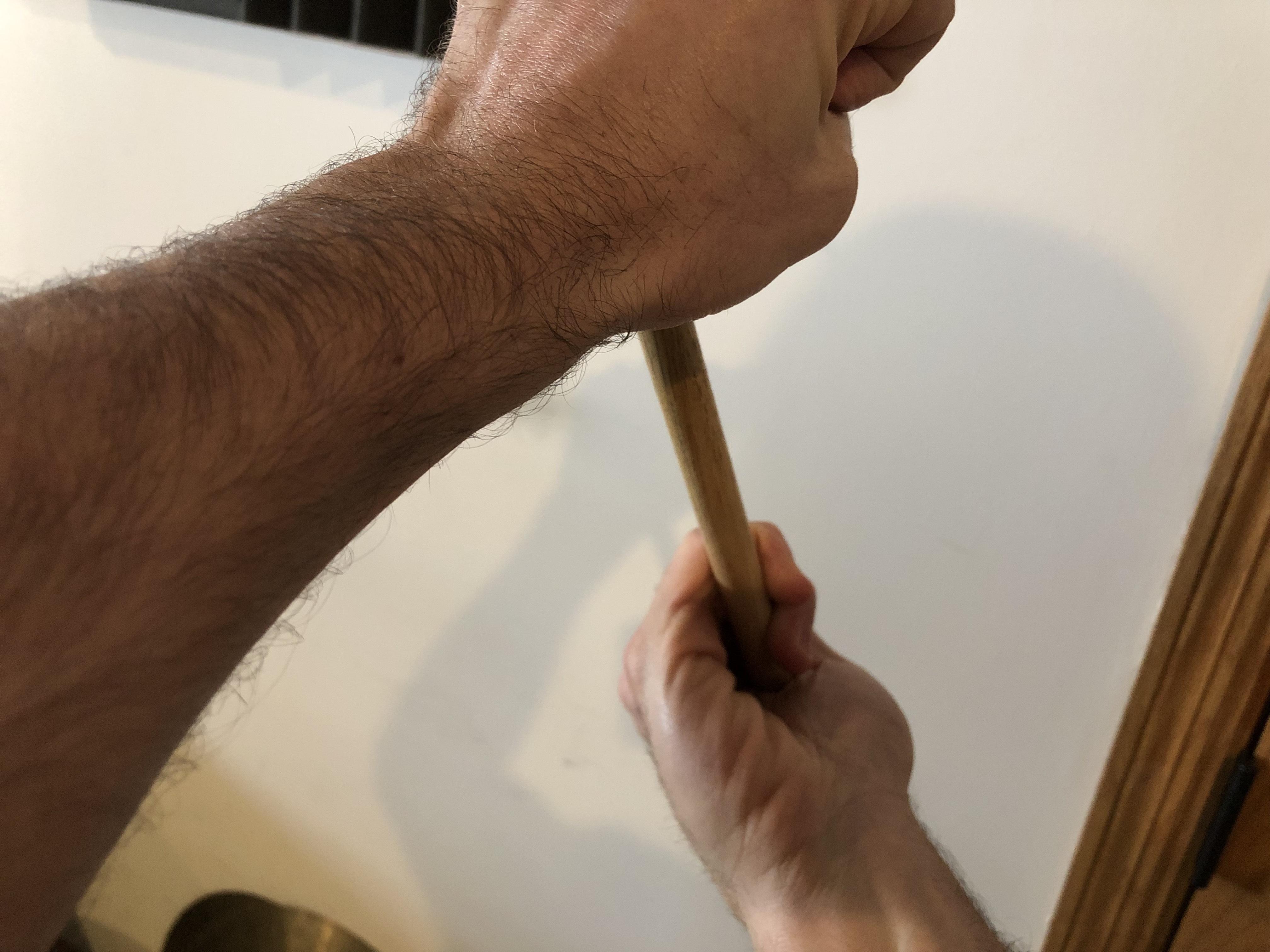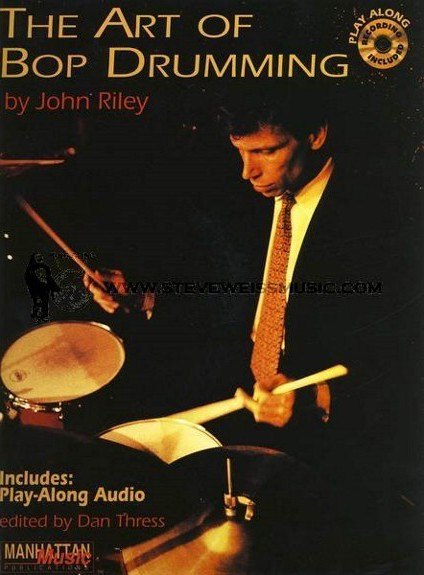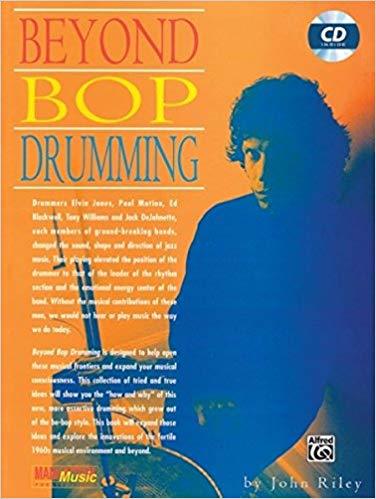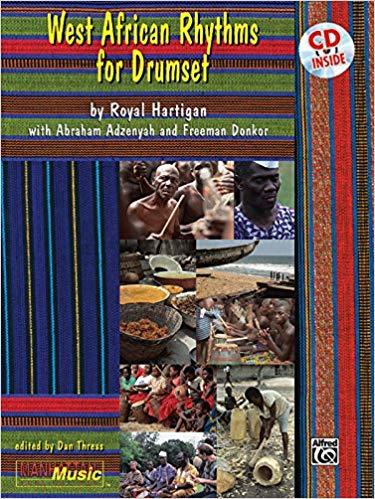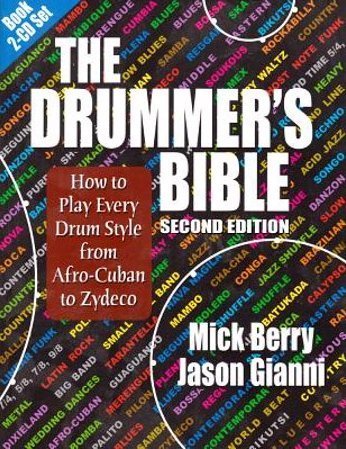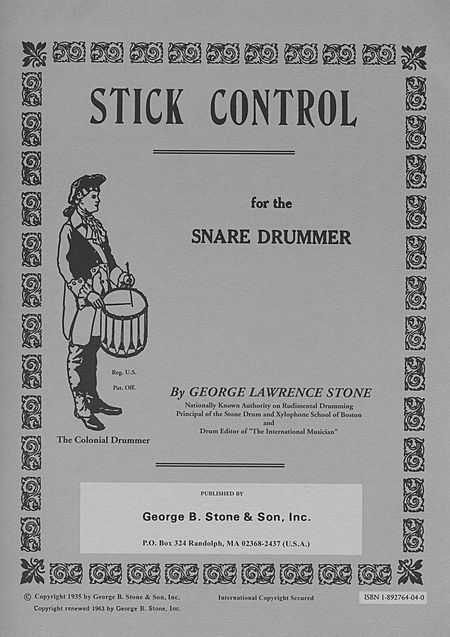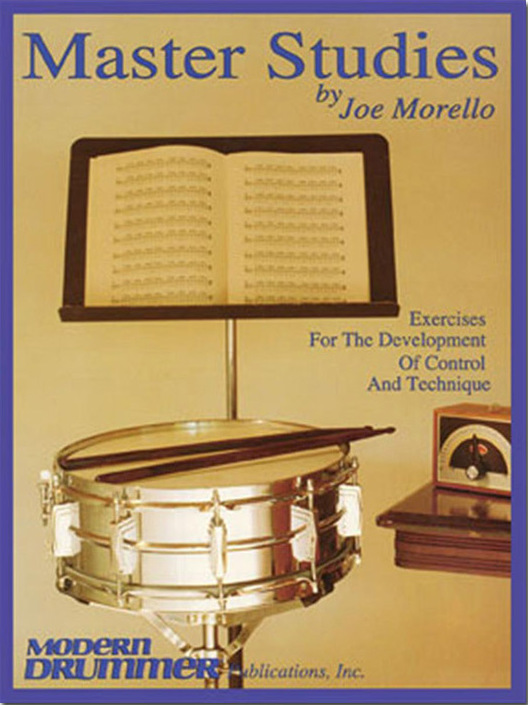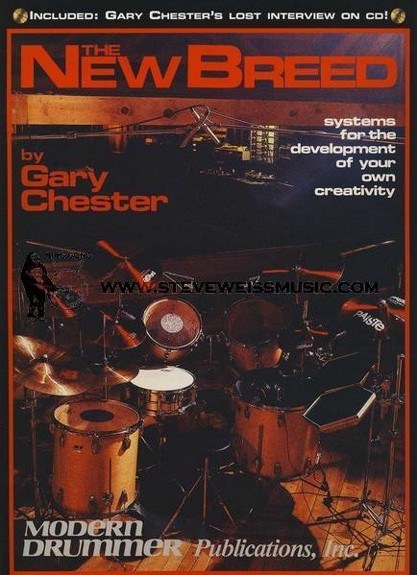I love to see the excitement in a child when they decide they want to do something new...like taking up drumming. I have a young son myself and he loves drumming. I taught him a whole summer of lessons and now he thinks he knows it all! Ha! But, there are a few things that I was able to set him up with so he had the right tools to start learning.
I'm going to go over everything your child would need to get started in drums or percussion. This would cover drum sets, sticks, lessons, books, pads, metronomes, etc. I am specifically writing this for my own new students but I know this will help other parents too. This article covers kids from ages 5-10. If they are older, take a look at my other article that covers ages 10 to adult: Definitive Drum Practice Guide from Beginner to Advanced - Part 1 - Scheduling and Gear.
What Age Should they Start?
I always say that the age of five is probably the youngest a child could start learning drums. Of course, that depends on how much they are able to focus. Some kids at 5 years old can't focus at all while some can focus for at least 20-30 minutes. This is a relatively normal attention span with how most kids develop. My son didn't try lessons until he was 6 and it was a struggle for him to focus longer than 10 minutes. It would be safe to say that any child 8 years old and up would be ready to start learning drums.
Should They Get Lessons?
I have an opinion about “lessons vs. self-taught” that I would like to explain so I can help you decide on whether they should get lessons or not.
When you self-teach, in any subject or discipline, it only takes you longer to reach your goals if you do it without the direction of a teacher that has already reached similar goals. I understand that everyone learns a bit differently, but as long as you have a good teacher, they will always find a solution faster than you can. Otherwise you're just taking shots in the dark to try to figure out techniques, licks, etc.
Bottom line is, good teachers will always help you reach your goals faster. At a younger age (younger than 12), it is almost imperative to get them lessons. There aren't a lot of children that would be able to learn drumming without some direction to start with.
What You Need to Buy
Drumset, Practice Pad, or Percussion Kit?
This is the big question here. How far do you think they will go? Do they seem dedicated enough to invest in a drum set? That is going to have to be the question you ask yourself. Obviously there are drum sets of all sizes and colors. But you don’t need to start out by spending $800 on a drum set. You could start out with a beginner's drum set, practice pad, or percussion kit. This would get them started practicing techniques like single stroke or double stroke rolls. Even learning to hit a drum properly can be tricky at first. In this section, I will cover all types of options ranging from cost effective to higher end. One thing to remember, when you start buying adult sized, medium quality kits, they don't come with cymbals, pedals, or thrones (drum seats). Decent cymbals are almost always sold separately from drum sets and can range anywhere from $200-$500 for one cymbal!
Drumset
I bought my son this Gammon Drum set when he started showing a lot of interest. For the price, it's great. The cymbals could be better but I still thought it was worth the price. The drums sound pretty good and they are tunable. The cymbals could be upgraded at a later time if the student continues to stay interested. Cymbals can be expensive so buying them later can help get your child started while keeping the cost down. This set comes in a few different color choices as well.
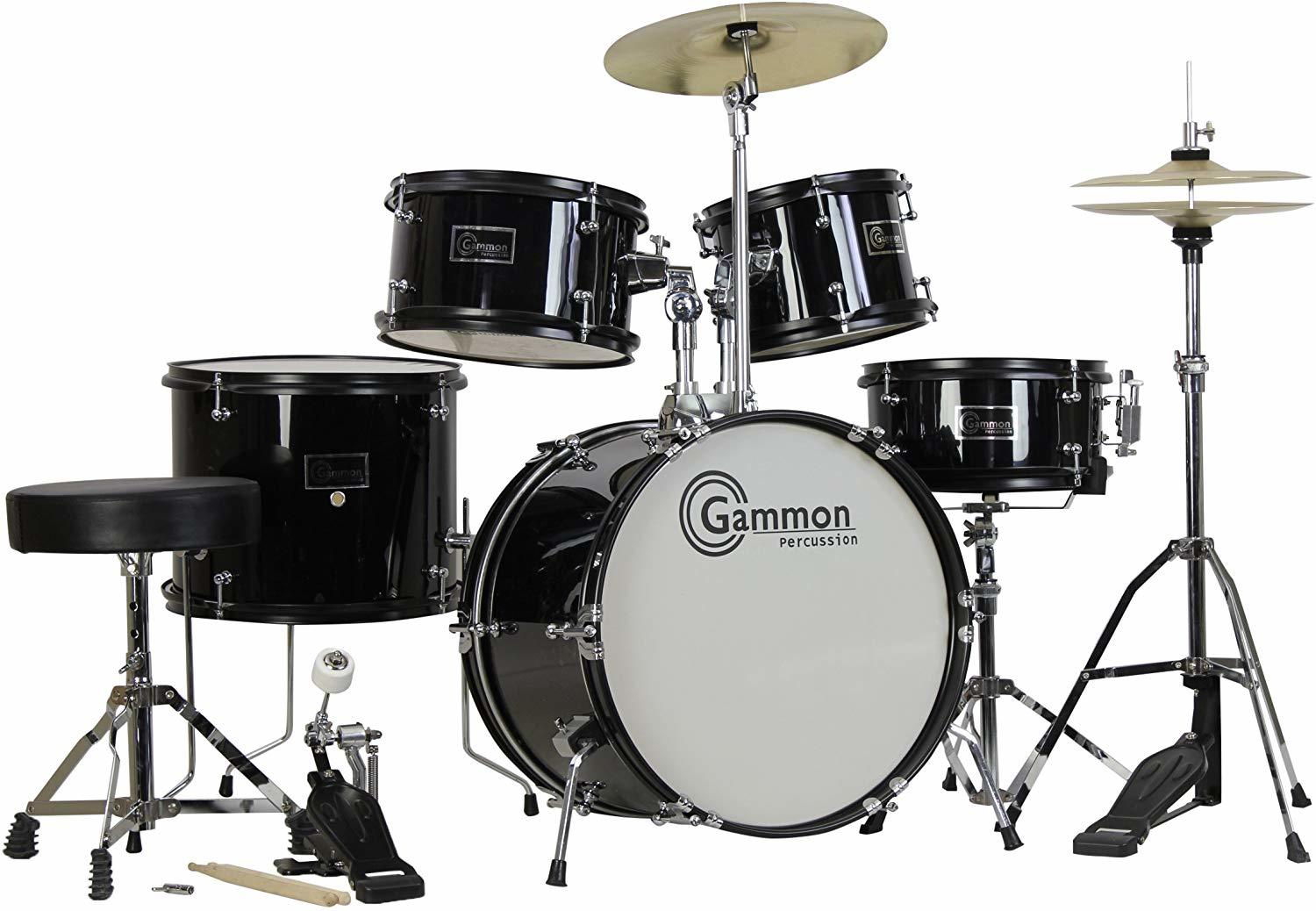
Gammon 5-Piece Junior Starter Drum Kit with Cymbals, Hardware, Sticks, & Throne (view item on Amazon.com) (commissioned links)
If you wanted to step up the quality in the drum set, you could take a look at this Ludwig Questlove Pocket Set. Buying a name brand will help a lot with resale value if they happen to lose interest. I will say with this kit as well, the cymbals still aren't much to be desired. However, this kit can be grown into and upgraded a bit easier than the previous kit, and it will last longer too. There are a few colors to choose from on this kit as well!
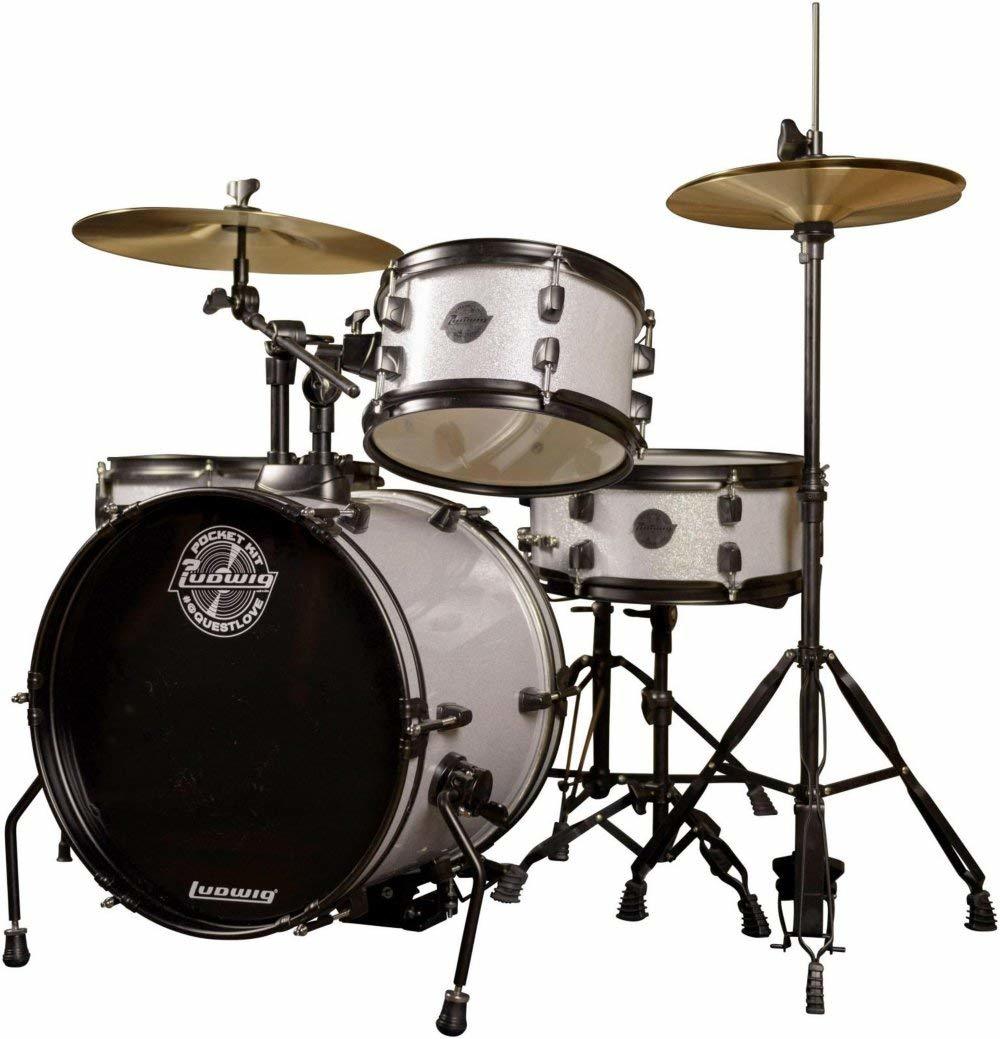
Ludwig LC178X016 Questlove Pocket Kit 4-piece Drum Set (view item on Amazon.com) (commissioned links)
If you want to support your child's interest in drums, and keep your neighbors in good standing with you, you might want to look at an electronic drum set. These can be virtually silent when played but heard in headphones or controlled by volume through speakers. It has a built in metronome and other practice tools right in the module and a bunch of sounds sounds to play with. I do have to mention that nothing can replace the sound and feel of a real acoustic drum set. Learning on a electronic drum set can be good for a while but eventually, they will need to learn techniques that are difficult to replicate on an electronic drum set.
This Alesis Turbo kit is very affordable and comes with everything you need including sticks and headphones. The sticks might be a bit too long for a smaller person but I have some other options listed below.
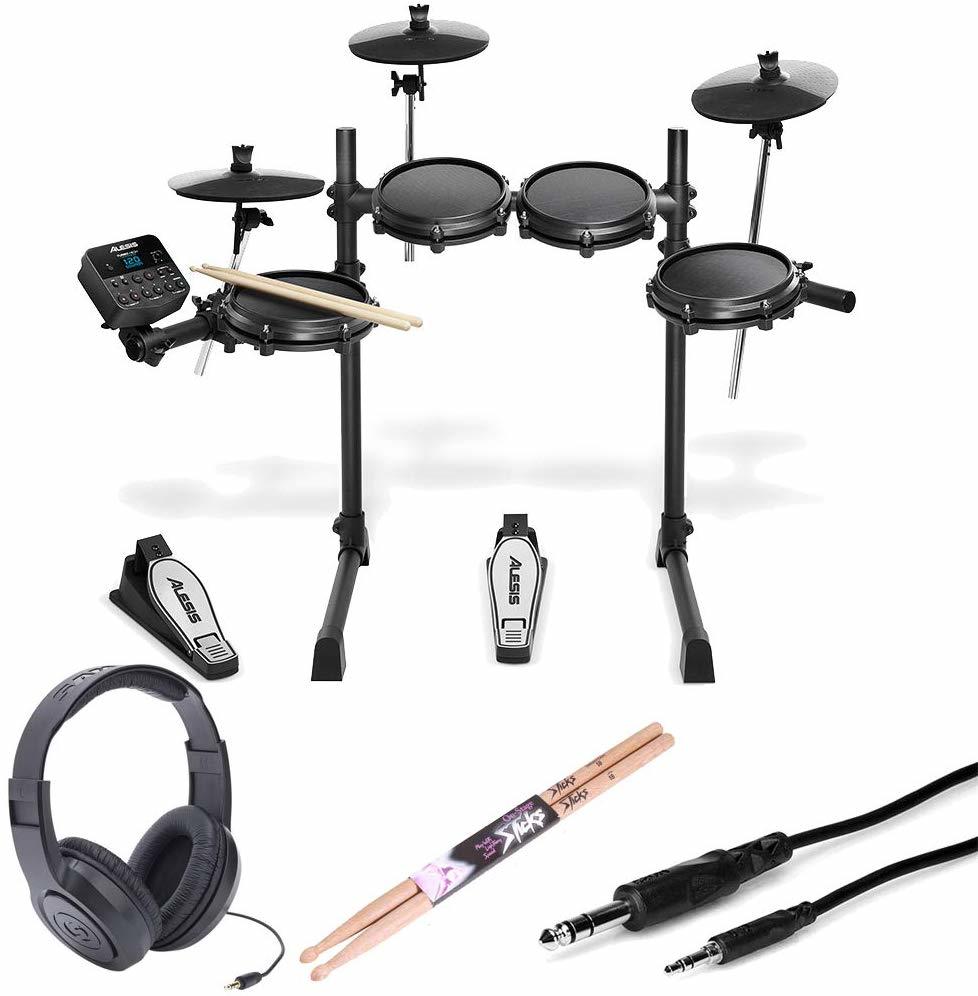
Alesis Turbo Mesh 7 Piece Electronic Drum Kit With a Pair of Drum Sticks + Samson SR350 Headphones + Hosa 3.5 mm Interconnect Cable, 10 feet - Deluxe Accessory Bundle (view item on Amazon.com) (commissioned links)
If you wanted to upgrade or buy a package with a speaker, you can take a look at this Alesis Nitro kit with a speaker included.

Alesis Nitro Mesh Kit + Strike Amp 12 | 8-Piece All-Mesh Electronic Drum Kit Bundled with 2000-Watt Ultra-Portable Powered Drum Speaker/Amplifier (view item on Amazon.com) (commissioned links)
Practice Pad
For around $20, you can get a practice pad and work on almost all the drumming techniques they will need in order to sound good on a drum set. And your student will always need a practice pad. I have three myself and I use them all the time. They can use them for warm-ups backstage before performances, late night practice when they can’t be loud, practicing on a beach, or on the john! They’re smaller and easier to transport than a drum set!
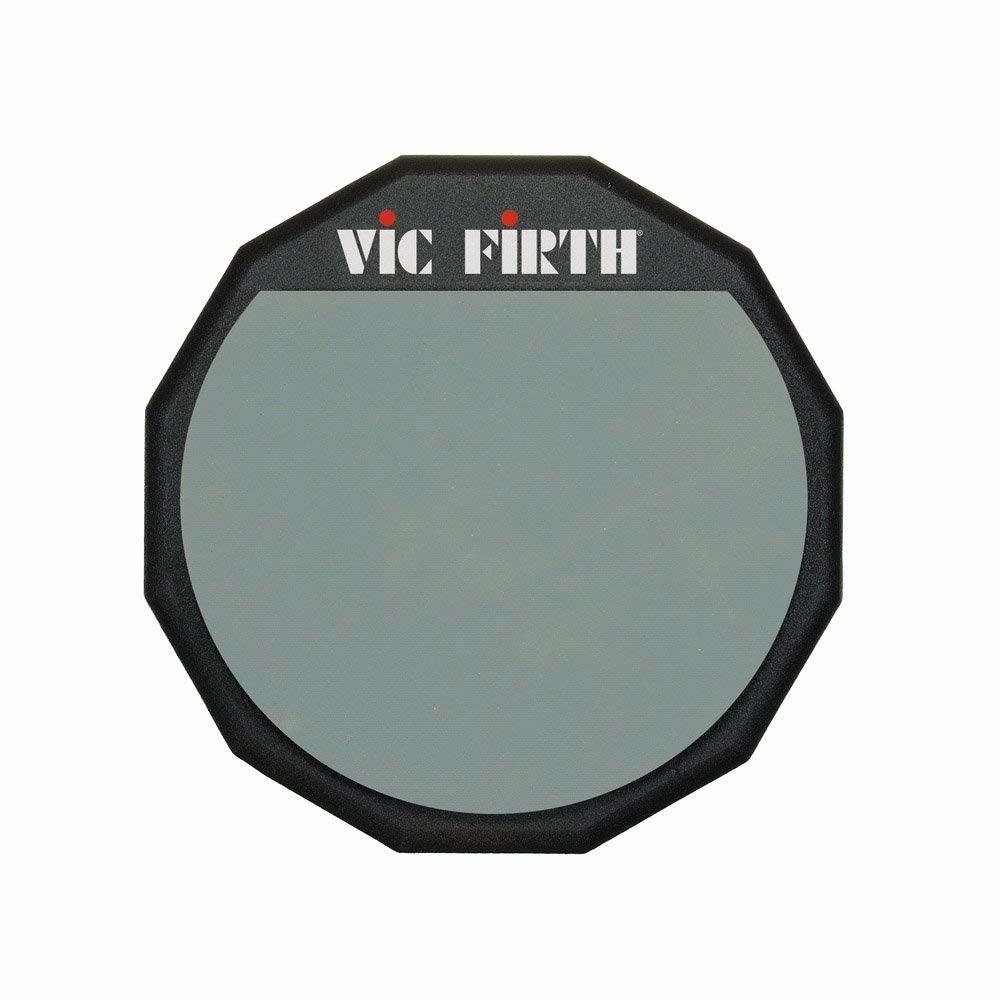
Vic Firth 6" Single Sided Practice Pad (view item on Amazon.com) (commissioned links)
Percussion Kit
When a student joins the school band, a lot of schools require that you purchase a percussion kit. This is a kit that includes sticks, practice pad, bell kit, mallets, and a multi purpose stand. I would highly suggest getting a good quality one for two reasons. First, the cheap ones are really bad and will fall apart before school years end. Secondly, the resale value on a brand name kit will not go down by much. It will sell without trouble because people are always looking for these.
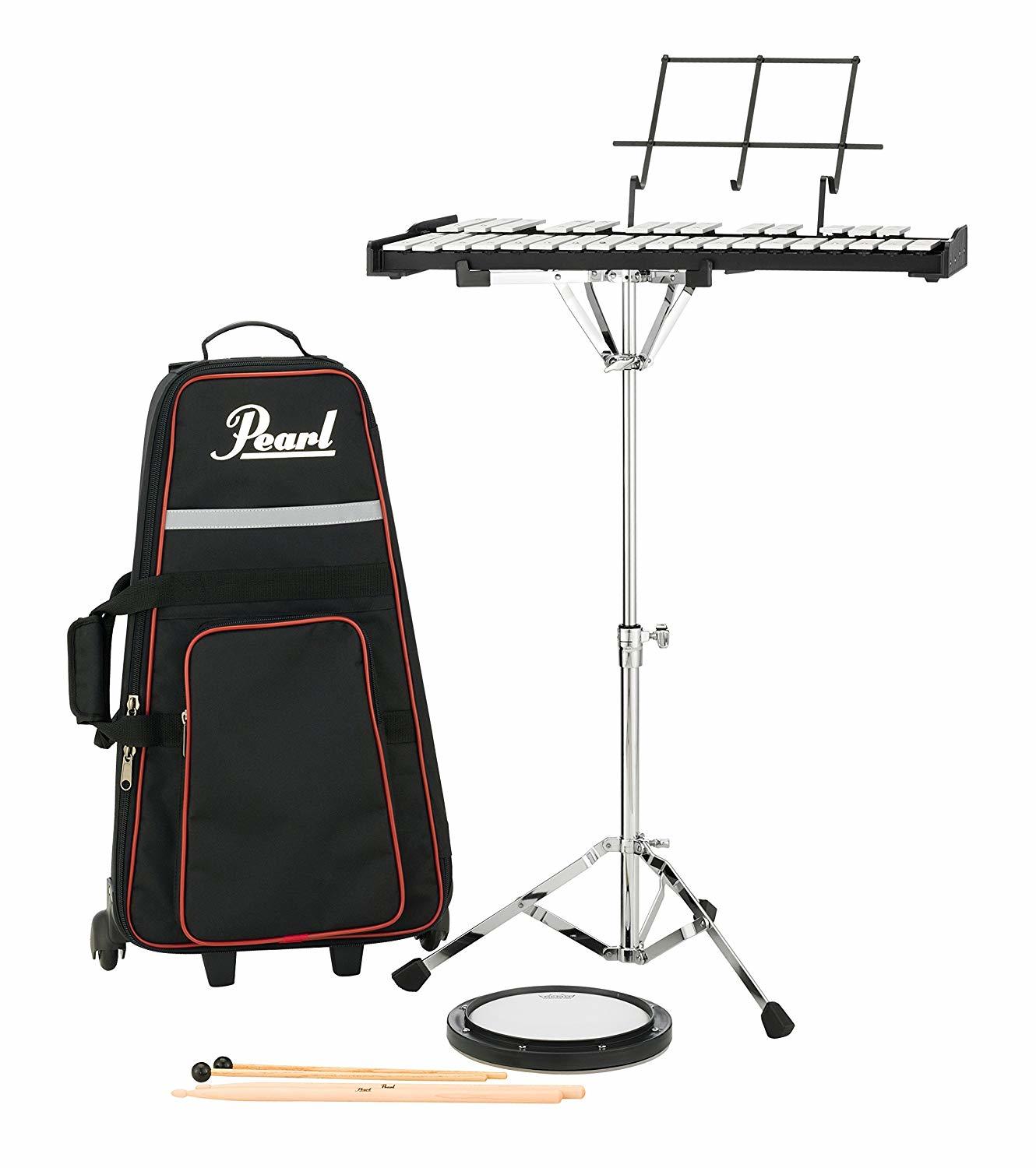
Pearl PK910C Educational Bell Kit (view item on Amazon.com) (commissioned links)
Sticks
Every drummer needs drumsticks, but what kind? There are literally hundreds of different types of drumsticks. At this age, the length and weight are the most important because standard/adult sized sticks might be a bit heavy. A lot of kids like to get sticks with their favorite characters or band on them. As long as the drum sticks are about the length of their forearm, it should work well for them. I like these Vic Firth Kidsticks, they come in blue or pink.

Vic Firth Kidsticks (view item on Amazon.com) (commissioned links)
For kids under 12 and have joined school band or a community band, then the Vic Firth SD1 Jrs. are what you'll need. They are a bit bigger than drum set sticks but they work better for concert snare drum and tom work.

Vic Firth American Custom SD1 Jr. Drumsticks (SD1JR) (view item on Amazon.com) (commissioned links)
Metronome
One item that musicians overlook is a metronome. This is an essential practice tool for any musician. A metronome is a small electronic device or a phone app that makes a “click” noise at a perfectly constant speed that you set it to. The clicks are measured by “beats per minute” or BPM. For the math junkies, a metronome set at 60 BPM will click 60 times in one minute.
Almost all music is set to a constant pulse and it is essential for all musicians to have a solid internal pulse that doesn’t speed up or slow down (unless intentional). The only way to practice your internal pulse is to practice along to a metronome set to a perfectly constant tempo.
As a drummer, it is a bit more difficult to practice with a metronome because our instrument is naturally loud. And, as a beginner, it is difficult to control the volume at which we play. So, a lot of metronomes are too quiet to hear while we practice with them. The solution is to get some sort of an in-ear monitor or headphones. This helps block the outside sound allowing us to hear the click.
There are many metronome apps available on our phones that are free. If you go that route you could get these sound isolation headphones: Shure SE215-CL Sound Isolating Earphones. Or, you could use other headphones you already own for the time being but they might not provide very much isolation. Otherwise, you can purchase this ‘all-in-one’ in ear metronome: Korg In-Ear Metronome.

Shure SE215-CL Sound Isolating Earphones (view item on Amazon.com) (commissioned links)

Korg IE1M In-Ear Metronome (view item on Amazon.com) (commissioned links)
Practice Book
This is the one book I go to as the definitive starting drum set method. Alfred's Beginning Drumset Method is perfect. It starts with reading music and rhythms, holding the sticks, and playing basic rock beats and eventually moves along to more advanced beats and a jazz section in the second half. This is the book I started with myself!
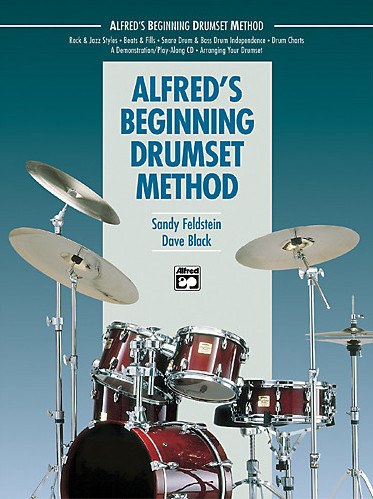
Alfred Beginning Drumset Method Book with optional CD (view item on Amazon.com) (commissioned links)
And with that, I think your little beat maker is ready to get started! Don't hesitate to email me with any questions!
As your student moves along, I would strongly suggest reading my two part series on practicing. The links are right here:
Definitive Drum Practice Guide from Beginner to Advanced - Part 1 - Scheduling and Gear
Definitive Drum Practice Guide from Beginner to Advanced – Part 2 – Practice Session
Thanks for reading!
**Full Disclosure: I earn a commission if you click any of these links and make a purchase, at no additional cost to you.**

